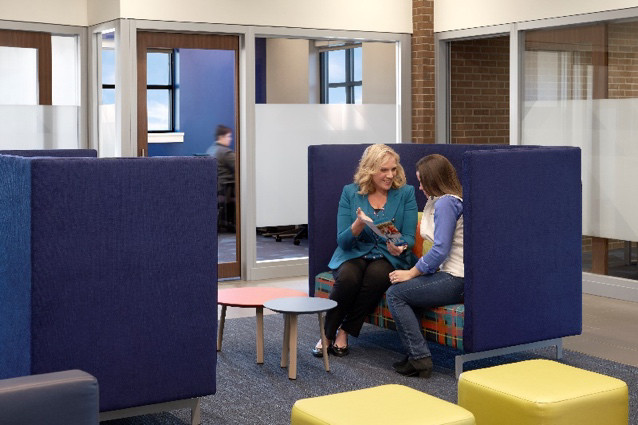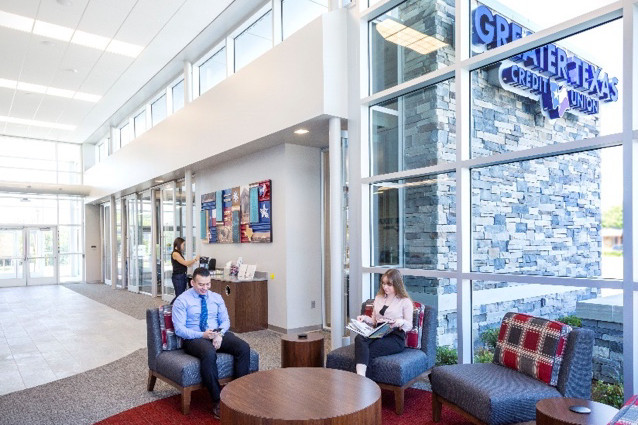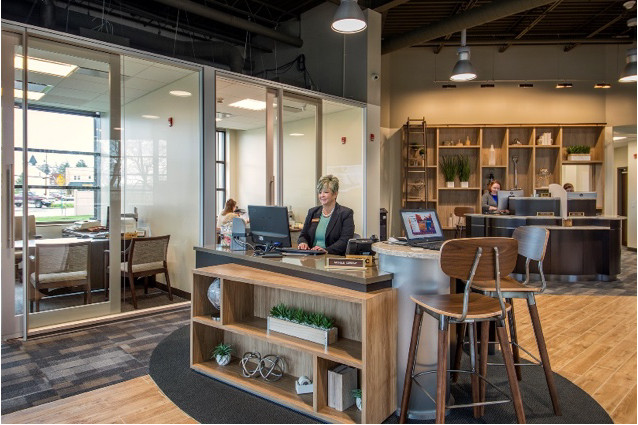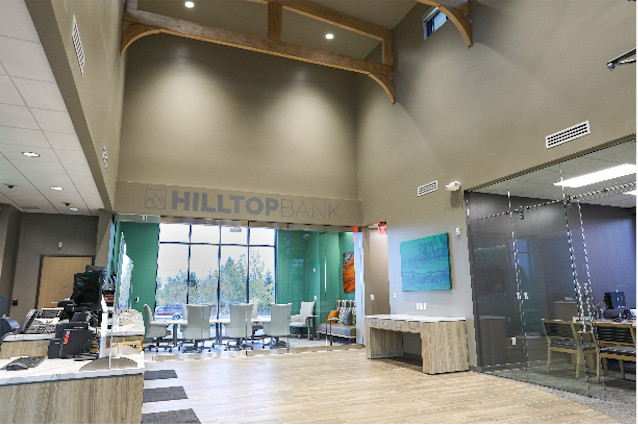Written by Amanda Jasper, Director of Corporate Communications at NewGround
So, you’ve strategized and designed your prototype that will drive change across your branch system – but how can you drive change across your staff behavior and interaction?

In this final installment of our prototype series, we interviewed NewGround’s Tom Auer, Senior Vice President of Design, and Scott Florini, Vice President of Strategy, to look at how proactive change management influences the overall strategic growth and success of the prototype design.
Consistent Culture
How does the new prototype affect your organizational culture? Your prototype can only be successful if your staff properly engages and utilizes the new design to its full potential.
“When your staff doesn’t engage with the prototype, there’s a danger of disjointed service delivery and overall experience. You can get one experience in one facility, but a totally different experience in another,” said Scott Florini, Vice President of Strategy at NewGround.

Internal confusion will only result in external confusion. The final piece of the prototype puzzle is to make sure proper change management is in motion.
“You want to bring consistency to the look, feel, and culture within the prototype,” said Scott. “It’s possible to end up with mixed brand messaging. You want people to easily recognize elements of your service and character.”
Consistent messaging produced by your staff to align with the prototype is crucial – which is why effective change management solutions and training are important.
Through change management programs like IMAGINE and WayPoint, you can ensure your leadership teams and internal staff are same delivery strategy across your entire network of branches. Without proper alignment, you risk the overall success of your organization.

Understanding Your Role
“Change management is designed to help educate employees internally about the changes being implemented and how to adapt,” said Scott.
What is your role? How do you engage better with the consumer? How do you become better at what you do?
Analyzing performance can help you understand what has helped or hurt your business. “After the design is complete, it’s important to know if the prototype works. Does it accomplish what it was set out to do? This will help you improve your next prototype,” said Tom Auer, Senior Vice President of Design at NewGround.
It is beneficial for everyone to look at the results and how roles are affected by the prototype. “Make decisions based on empirical information. If you didn’t have post-project research, you would never have feedback on what works and what doesn’t,” said Scott.
Without proper data and feedback, the success of your prototype will be limited. If you know how the prototype is performing both internally and externally, you can make necessary adjustments sooner to positively impact performance.

Changing the Game
Prototypes are a game changer. A successful prototype – and adapting to that prototype – can set you apart from your competition and align your organization for ultimate success.
“It’s almost like bowling through a curtain – it’s not very rewarding,” said Tom. “If you roll the bowling ball down the alley, you’re not sure if you got a strike or if you only knocked three pins down. With prototyping, you can know when you get a strike – and you can know what pins were missed and why. Analyze all aspects of the game to improve for next time. Because of that constant feedback, you will know when you got a strike or just a spare.”

Knowing what works and what does not can only improve your game for next time, fine-tuning your workplace strategy to see how to effectively adapt the prototype across your locations, ultimately influencing branch transformation.
Keep in mind, YOU might not like the prototype design yourself, but if your clients and staff love it and it’s performing well – that’s when you know to continue replicating
that prototype. In our “new normal,” it’s hard to adapt to change, but it’s critical in the overall success of your organization to not just survive during changing times but thrive.
Final Thoughts
As demonstrated throughout our prototype series, you can see how strategy, design, and change management all play a role in implementing an effective, forward-thinking prototype.
“A good branch design without a good business strategy and good staff is just an empty box. You must effectively engage with the prototype to be successful. At the end of the day, it’s all about performance,” said Tom.
The power of the prototype lies within well-developed strategy, innovative design, and comprehensive change management solutions. In an ever-changing market when you need to be the strongest and fastest in your industry to rise above the competition, implementing a prototype will help boost overall ROI and enhance performance across your organization.